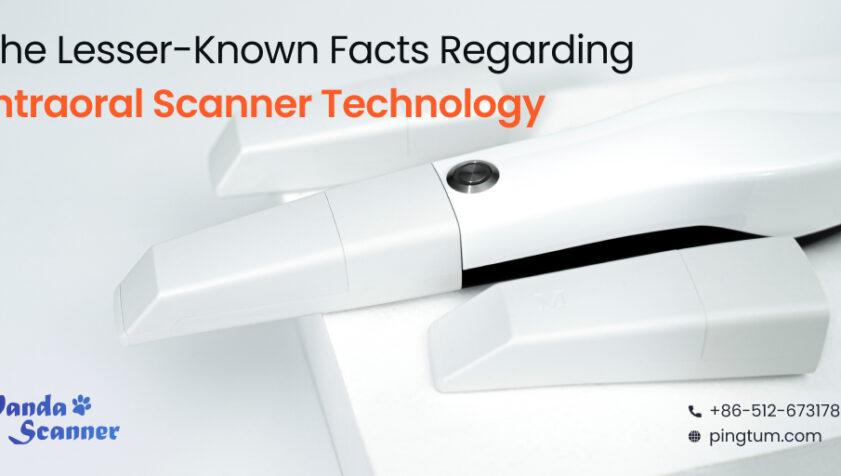Technology has lately made amazing advances in the field of dentistry, revolutionising traditional dental treatments and improving patient experiences. The intraoral scanner is one such revolutionary device that has fundamentally transformed how dental impressions are obtained. It is a valuable piece of equipment. We’ll delve into the fascinating world of intraoral scanners, examining their technology, benefits, and impact on modern dentistry.
The Basics of Intraoral Scanners
We must learn the fundamentals of technology in order to comprehend intraoral scanners. A portable equipment known as an intraoral scanner is used to take very precise 3D digital photographs of the oral cavity, including the teeth, gums, and other structures, in patients. It does away with messy conventional impressions by using cutting-edge optical and laser technologies to build a virtual reproduction of the patient’s mouth.

How Intraoral Scanners Work
To take and process the digital pictures, intraoral scanners use a mix of hardware and software components. Advanced optical sensors and a light source that directs structured light or laser beams onto the teeth are both features of the scanner’s wand-like gadget. The reflected light is captured by these sensors, which subsequently build a very accurate 3D model of the oral structures. This model is then sent to a computer or other digital device for additional processing.
Benefits of Intraoral Scanners
Both dental professionals and patients have greatly benefited from the deployment of intraoral scanners. Here are several major advantages:
- Enhanced Precision
With their unmatched precision, intraoral scanners ensure extremely precise digital imprints for better treatment outcomes.
- Saves Time
Traditional impressions are substantially slower than digital scans, which reduces crucial chair time and speeds up treatment planning.
- Convenient for Patient
Intraoral scanners provide a more comfortable experience for patients by removing the pain and gag reflex linked to conventional impressions.
- Better Communication
The dental team can collaborate and communicate effectively thanks to the simple sharing of digital images with laboratory technicians and experts.
- Streamlined Workflow
Because intraoral scans are digital, CAD/CAM systems may easily integrate with them, allowing for the accurate and speedy manufacturing of dental restorations.
Applications of Intraoral Scanners
Dental treatments that use intraoral scanners include, but are not limited to:
- Crown and Bridge Restorations
Dental crowns and bridges may be designed and made precisely thanks to digital imprints created by intraoral scanners.
- Orthodontics
Orthodontic treatment planning heavily utilises intraoral scanners, which enable precise digital models, treatment simulations, and aligner manufacture.
- Implant Dentistry
Dental implants may be planned and placed more effectively and with more predictability with the use of intraoral imaging.
- Prosthodontics
The production of extremely accurate and aesthetically pleasing detachable dentures and prosthetic restorations is made possible by digital imprints taken by intraoral scanners.
Future Developments and Advancements
Intraoral scanner technology is still developing quickly. The introduction of improvements, including increased accuracy, quicker scanning rates, and improved software features, is ongoing. Furthermore, the use of AI algorithms has the potential to automate several processes involved in dental diagnosis and treatment planning, further revolutionising the industry.
Things to Consider When Choosing an Intraoral Scanner
#1. Accuracy and Precision
Analyse the scanner’s track record for taking digital impressions with accuracy and precision. For precise and comprehensive scans, look for scanners with high-resolution imaging and cutting-edge optical technology.
#2. Compatibility
Make sure the scanner is compatible with the hardware and software setup of your current practise. A smooth integration with CAD/CAM systems or other digital workflows utilised in your practise should be checked.
#3. Efficiency
Analyse the device’s scanning speed. The process can be improved and patient chair time may be decreased with faster scanning times. To increase productivity, look for scanners with features like real-time feedback, automated scanning capabilities, or high-speed scanning modes.
#4. Software Features
Examine the software features that the scanner offers. Real-time rendering, automated margin recognition, and simple editing tools are all desirable qualities. To guarantee that the scanner’s software is up-to-date and compatible with developing technologies, ask about software upgrades and customer support.
#5. Patient Convenience
Take into account the patients’ degree of comfort while scanning. Consider characteristics like ergonomic designs, compact scanning tips, and lowered gag reflex triggers. To reduce patient discomfort, evaluate the scanner’s vibration and noise levels.
#6. User Reviews
Do your homework and study customer testimonials and comments from other dental professionals who have used the Panda intraoral scanner you are thinking about. Think about going to trade shows or seminars where you may see demonstrations and compare various scanner solutions.
Final Thoughts
Dental technology has been revolutionised by intraoral scanners, which provide precise, effective, and patient-friendly alternatives to conventional impressions. These advanced equipment have transformed into essential instruments in contemporary dentistry practises thanks to their precise digital impressions, simplified workflows, and enhanced treatment outcomes. As technology develops, we may anticipate further improvements and developments that will influence dentistry’s future for the benefit of patients and dental professionals alike.






